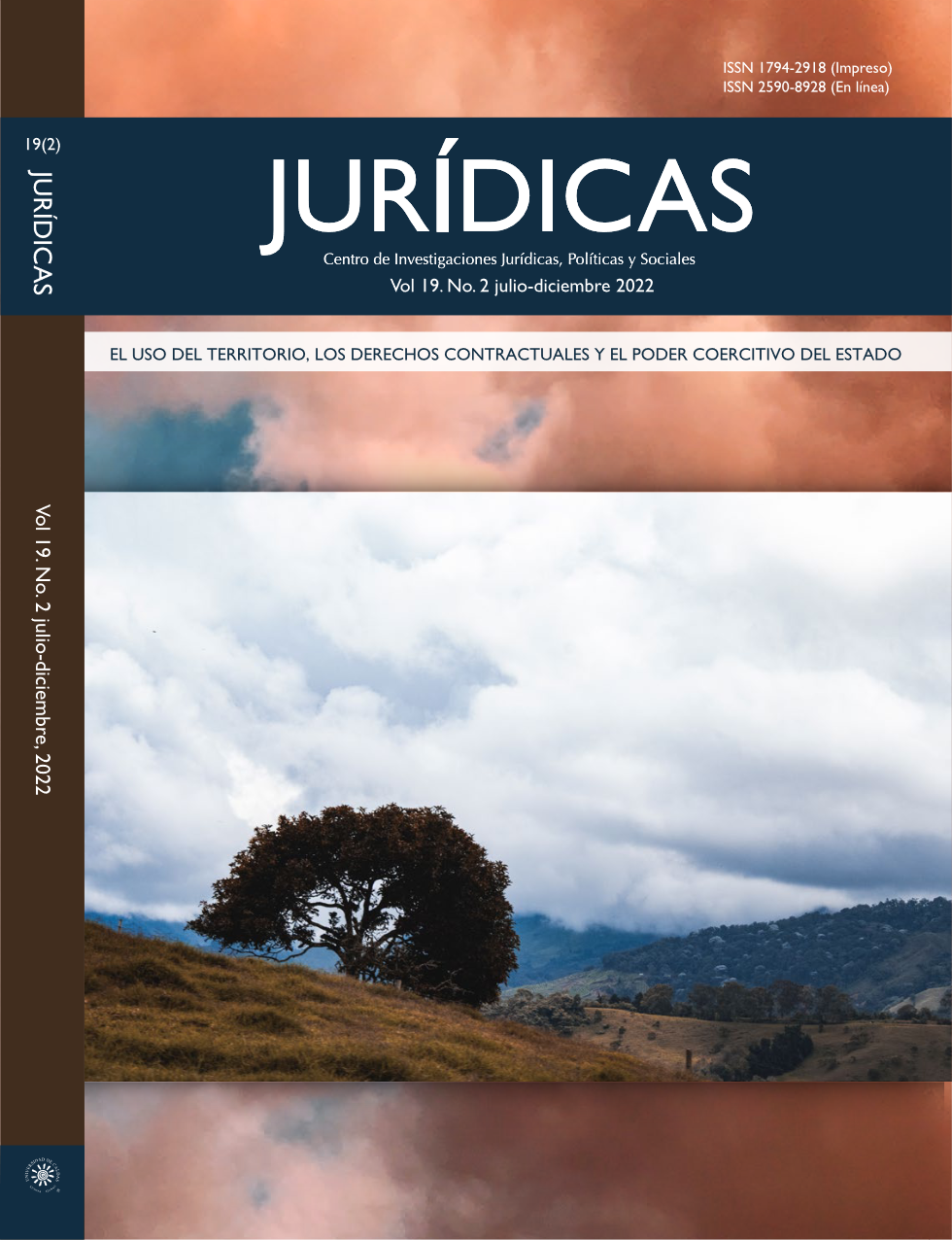Autores/as
Resumen
El objetivo de este trabajo es identificar la evolución que presenta la conducta criminal a través del transcurso de la vida de un grupo de 824 mujeres detenidas por delitos de violencia intrafamiliar, en 2007, por parte de Carabineros de Chile. El diseño es longitudinal pseudo prospectivo, lo que permite su seguimiento a través de 9 años, tal como si correspondiera a un estudio longitudinal prospectivo. Se consideró como reincidencia cualquier nueva detención o denuncia en su contra, entre 2007-2016. El 60,6% de las mujeres reincidieron, acumulando un total de 2.583 delitos. Las trayectorias criminales de esta población se extendieron bastante más allá de los 30 años, generando una curva edad/delito alargada, dado que una parte importante de estas mujeres se mantuvieron cometiendo delitos hasta los 40 años, alejándose de la tradicional forma que adquiere la curva edad/delito.
Palabras clave:
Citas
Akers, C. & Kaukinen, C. (2009). The police reporting behavior of intimate partner violence victims. Journal of family violence, 24(3), 159-171. DOI: 10.1007/s10896-008-9213-4
Andreu, J. M. y Peña, M. E. (2013). Propiedades psicométricas de la Escala de Conducta Antisocial y Delictiva en adolescentes. Anales de psicología, 29, 516–522. DOI: 10.6018/analesps.29.2.135951
Block, C. R., Blokland, A. A., Van der Werff, C., Van Os, R. & Nieuwbeerta, P. (2010). Long-Term Patterns of Offending in Women. Feminist Criminology, 5(1), 73-107. DOI: 10.1177/1557085109356520
Blokland, A. & Van Os, R. (2010). Life span offending trajectories of convicted Dutch women. International Criminal Justice Review, 20(2), 169-187. DOI: 10.1177/1057567710368938
Blumstein, A. (2017). Some Trends in Homicide and Its Age‐Crime Curves. In F. Brookman, E. R. Maguire and M. Maguire (eds.), The Handbook of Homicide (pp. 44-53). DOI: 10.1002/9781118924501.ch3
Cauffman, E., Fine, A., Thomas, A. G. & Monahan, K. C. (2017). Trajectories of violent behavior among females and males. Child development, 88(1), 41-54. DOI: 10.1111/cdev.12678/full
Doherty, E. E. & Ensminger, M. E. (2014). Do the adult criminal careers of African Americans fit the “facts”? Journal of Criminal Justice, 42, 517-526. DOI: 10.1016/j.jcrimjus.2014.09.006
Eggleston, E. P. & Laub, J. H. (2002). The onset of adult offending: A neglected dimension of the criminal career. Journal of criminal justice, 30(6), 603-622. DOI: 10.1016/S0047-2352(02)00193-9
Farrington, D. P. (2003). Developmental and Life-Course Criminology: Key Theoretical and Empirical Issues – The 2002 Sutherland Award Address. Criminology, 41, 221-255. DOI: 10.1111/j.1745-9125.2003.tb00987.x
Farrington, D. P., Jolliffe, D., Hawkins, J. D., Catalano, R. F., Hill, K. G. & Kosterman, R. (2003). Comparing Delinquency Careers in Court Records and Self-Reports. Criminology, 41, 933-958. DOI: 10.1111/j.1745-9125.2003.tb01009.x
Farrington, D. P., Ttofi, M. M., Crago, R. V. & Coid, J. W. (2014). Prevalence, frequency, onset, desistance and criminal career duration in self‐reports compared with official records. Criminal Behaviour and Mental Health, 24(4), 241-253. DOI: 10.1002/cbm.1930
Ferrante, A. M. (2013). Assessing gender and ethnic differences in developmental trajectories of offending. Australian and New Zealand Journal of Criminology, 39, 34-53. DOI: 10.1177/0004865813490948
Gordis, L. (2005). Epidemiología. Elsevier.
Gottfredson, M. R. & Hirschi, T. (1990). A general theory of crime. Stanford University Press.
Gunnison, E. & McCartan, L. M. (2010). Persistent versus late onset among female offenders: A test of state dependent and population heterogeneity interpretations. Western Criminology Review, 11(3),
45-62.
Holtzworth-Munroe, A. & Stuart, G. L. (1994). Typologies of male batterers: three subtypes and the differences among them. Psychological Bulletin, 116, 476-497. DOI: 10.1037/0033-2909.116.3.476
Klausen, J., Morrill, T. & Libretti, R. (2016). The terrorist age‐crime curve: An analysis of American Islamist terrorist offenders and age‐specific propensity for participation in violent and nonviolent incidents. Social Science Quarterly, 97(1), 19-32. DOI: 10.1111/ssqu.12249
Kratzer, L. & Hodgins, S. (1999). A typology of offenders: A test of Moffitt’s theory among males and females from childhood to age 30. Criminal Behaviour and Mental Health, 9(1), 57-73. DOI: 10.1002/cbm.291
Leal, W. & Mier, C. (2017). What’s age got to do with it? Comparing juveniles and adults on drugs and crime. Crime & Delinquency, 63(3), 334-352. DOI: 10.1177/0011128715616131
Loeber, R. (2012). Does the study of the age-crime curve have a future? In R. Loeber and B. C. Welsh (eds.), The future of criminology (pp. 11e19). Oxford University Press.
Loeber, R. & Farrington, D. P. (2014). Age-crime curve. In Encyclopedia of criminology and criminal justice (pp. 12-18). Springer New York. DOI: doi.org/10.1007/978-1-4614-5690-2_474
Loeber, R., Farrington, D. P., Stouthamer-Loeber, M. & White, H. R. (Eds.). (2008). Violence and serious theft: Development and prediction from childhood to adulthood. Taylor & Francis.
Loeber, R., Jennings, W. G., Ahonen, L., Piquero, A. R. & Farrington, D. P. (2017). Female Delinquency from Childhood to Young Adulthood: Recent Results from the Pittsburgh Girls Study. Springer. DOI: 10.1007/978-3-319-48030-5
Marcus, R. F. (2017). Violence in Adolescence. In The Development of Aggression and Violence in Adolescence (pp. 63-111). Palgrave Macmillan US. DOI: 10.1057/978-1-137-54563-3_3
Mazerolle, P., Brame, R., Paternoster, R., Piquero, A. & Dean, C. (2000). Onset age, persistence, and offending versatility: comparisons across gender. Criminology, 38, 1143-1172. DOI: 10.1111/j.1745-9125.2000.tb01417.x
Piquero, A. R., Farrington, D. P. & Blumstein, A. (2007). Key issues in criminal career research: New analyses of the Cambridge Study in Delinquent Development. Cambridge University Press.
Piquero, A. R., Hawkins, J. D., Kazemian, L., Petechuk, D. & Redondo, S. (2013). Patrones de la carrera delictiva: prevalencia, frecuencia, continuidad y desistimiento del delito. Revista Española de Investigación Criminológica, 1, 1-40.
Sampson, R. J. & Laub, J. H. (2003). Life‐Course Desisters? Trajectories of Crime Among Delinquent Boys Followed to Age 70. Criminology, 41, 301-340. DOI: 10.1111/j.1745-9125.2003.tb00997.x
Simpson, S. S., Yahner, J. L. & Dugan, L. (2008). Understanding women’s pathways to jail: Analysing the lives of incarcerated women. Australian & New Zealand Journal of Criminology, 41(1), 84-108. DOI: 10.1375/acri.41.1.84
Steffensmeier, D., Zhong, H. & Lu, Y. (2017). Age and its relation to crime in Taiwan and the United States: Invariant, or does cultural context matter? Criminology, 55(2), 377-404. DOI: 10.1111/1745-9125.12139
Svensson, R. (2002). Strategic offences in the criminal career context. British Journal of Criminology, 42(2), 395-411. DOI: 10.1093/bjc/42.2.395

 PDF
PDF
 FLIP
FLIP
 Perfil Google Scholar
Perfil Google Scholar




















